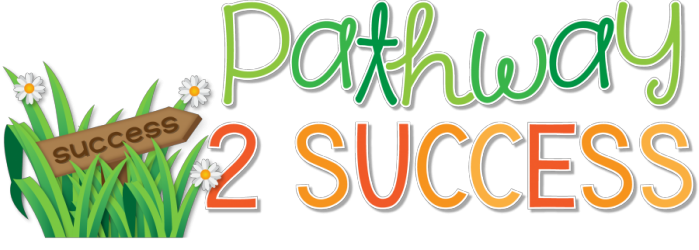
Play isn’t an extra when it comes to learning; it’s the natural ways that kids learn! During periods of free time and play activities, children are learning and practicing a variety of different skills necessary for success. They think, plan, communicate, create, initiate, and reflect. While at first glance playing might look like just a leisure activity for fun, it’s truly so much more.
What does the research say about play and executive functioning skills?
Strong research shows that play strengthens executive functioning skills (Yogman et al., 2018). While play strengthens bonds and relationships, it also provides practice with skills like cooperation, problem-solving, communication, and more. Other research highlights that kids who get more time with activities like free play showed stronger self-directed executive functioning skills (Barker et al., 2014).
Essentially, play is the practice of learning. When kids play, they learn how to learn. In turn, this builds upon a variety of different skills relating to executive functions:
- Self-regulation
- Attention and focus
- Ability to follow instructions
- Emotional management
- Working memory
- Self-control
- Planning
- Problem-solving
- Flexibility and creativity

Lastly, play is a biological drive (Brown, 2009). Just like sleep and proper nutrition, play is essential for our emotional, social, and physical well-being.
What play activities can help build executive functioning skills?
From games and building to story-telling and imaginative play, there are a number of different play activities we can use to boost executive functioning skill in children.
Games
Games are intrinsically fun for kids. While playing a game, learners are also communicating with peers, practicing social skills, following rules, and staying focused. Children also practice managing their emotions through the ups and downs of game-playing. A few engaging and executive-functioning boosting games to try are:
- Freeze – Play music and dance. When the leader says, “Freeze,” everyone should pause exactly as they are. Say the code word, “Melt” to allow everyone to move and dance again.
- Huddle Up – Stand in a large circle. Start with saying, “Huddle up if you love ice cream.” Everyone who loves ice cream would then huddle up in the middle of the circle together. Continue with other statements, giving everyone a chance to huddle up together at different times.
- Musical Chairs – Place a number of chairs around in a circle. You usually start with 1 fewer chairs than the number of players you have (so if you have 10 players, you would put out 9 chairs). Play music. Dance and walk in a circle around the chairs. When the music stops, everyone should go to sit in a seat. One person will remain standing. They will be “out” for this game. Remove a chair and repeat until only one player remains.
- Simon Says – Start with a phrase such as, “Simon says touch your nose.” Everyone should then in fact touch their nose. Continue with other phrases like “Simon says hop up and down,” and “Simon says balance on one leg.” At one point, throw in an instruction without saying “Simon says.” Players should avoid doing that action.

Building
As kids build, they are also planning what they want to make, using strategies to test ideas, creating something new, and problem-solving through any challenges along the way. Some building ideas to try include:
- Free Build – Use blocks, modeling clay, or other materials to build anything you’d like.
- Build-It – Assign a specific word and use blocks or modeling clay to build it. For example, you might build something you want to learn about or build yourself as a superhero. Use executive functioning creativity cards to give more ideas for building fun.

Free Play
Free play is unstructured time to explore, learn, and have fun. You can provide toys or simply allow kids to use their imaginations as they play. Children might build a fort, make up their own game to play together, or chase each other. The biggest key here is to not have an agenda, rules, or instructions. It’s important for learners to have autonomy. Free play means kids should be free to play in the way that feels best for them.

Sports and Movement
Exercise and movement are important components to play. Whether you’re inside or outdoors, here are a few movement games and activities to try with your learners:
- Ball Toss – Toss a ball back and forth in a group. Stay focused and alert so you are ready for the ball to come to you. Add a twist by asking a question for learners to answer as they get the ball tossed to them. For example, students might answer the follow questions: What is your favorite food? or Where would you like to travel to?
- Limbo – Start by holding a meter stick horizontally at about shoulder height. One-by-one, have players walk under the stick, bending backwards as they walk to make sure they don’t touch it! Once everyone makes it through, keep lowering the stick to make it more of a challenge.
- Balloon Volleyball – Blow up a balloon. Stand in teams across from each other. Use the balloon like a volleyball as you bounce it back and forth.
- Keep the Balloon Up – Blow up a balloon. Spread out across the room. Toss the balloon up in the air, allowing one person at a time to tap it so that it never touches the ground. Add an extra challenge by making a rule that one person can only touch the ball once before someone else needs to tap it.
- Stoplight – Start with saying, “Green light.” During this time, walk around and move your body in any way that you want. Then, shout out, “Yellow light.” Here, everyone should start to walk and move at a slower pace. Finally, when you say, “Red light,” everyone should pause and freeze. You can continue this several different times. Feel free to add music to it too!

Pretend Play
Imaginary play is shown to boost executive functioning skills. As kids play pretend, they are also practicing skills for flexibility, self-control, and problem-solving. While pretend play can be completely unstructured, you can also invite imaginary play with any of the activities below:
- Role-Play – Come up with a scenario to role-play in partners or small groups. For example, imagine that you are astronauts flying to and landing on another planet.
- Object Imagination – Choose an object around you. Pretend it is something completely different, such as a stick being a magic wand.
- Guard Duty – Pretend that you are a guard protecting the palace. Walk slowly to your destination as you stay in character the whole time.

Outdoor Play
Spending time outside is always filled with nature, excitement, and new things to learn. Harness the power of outdoor activities to also build executive functioning skills at the same time. A few outdoor activities to try include:
- Treasure Hunt – Select certain objects (like plastic eggs) and hide them outside in a given area. Give time for kids to find them on their own.
- Tag – Start with one person who is “it.” That person should try to run and tag someone, as everyone else tries to run away and not get tagged. Once someone is tagged, they will become “it” and the process starts again.
- Scavenger Hunt – Choose a list of items you hope to find outside and find them together. Nature finds might include things like an acorn, a bird, grass, and moss. You can also add challenges such as finding something that start with the letter L or something yellow.

Storytelling
Storytelling is the art of expressing a story using words, visuals, art, and movement. When children tell a story, they are practicing skills like planning, organization, and flexibility. Here are a few fun storytelling activities to try with your learners:
- Puppet Play – Use puppets to create your own stories. This can be done individually or in groups.
- Keep the Story Going – Have someone start by giving a sentence to a story. This can be anything! Then, have the next person add to the story by saying one sentence. Keep adding to the story person by person.
Music and Dance
When we hear music, it’s natural to want to move our bodies to the beat. Music and dance allow children to embrace creativity and other skills in a fun and engaging way.
- Dance Off – Play music and dance! Another option can be to stand in a circle and allow one or two kids to dance while other cheer them on.
- Follow the Beat – Using your hands or drumsticks, play a beat. Then, have the other repeat it back to you. Start with a simple beat and work on more challenging ones. Allow someone else to take the lead too.
- Copy Me – Stand in a circle with the leader in the middle. The person in the middle will do a simple dance move. Everyone else should imitate the move. Continue with more dance moves, progressively getting more advanced and challenging along the way.

Art
Arts and crafts provide an opportunity for kids to get creative, take healthy risks, make mistakes, problem-solve, and embrace their emotions. While there are unlimited ways to use art activities in the play arena, here are a few fun ones to try:
- Express Your Feelings – Use art materials to draw or color how you feel.
- Calm Coloring – Choose the most calming colors and create an art piece with them.
- Free Draw – Provide an array of different art materials. Then, draw, color, or create anything you want. Give time to share and discuss your creations.
- Partner Drawing – Create a drawing with a partner. You can draw anything you want, but the catch is that you must choose and draw together.

More Activities for Executive Functioning Skills
Executive functioning skills like organization, self-control, and flexibility are the foundation for so much other learning. Help your kids strengthen their executive functioning skills with lessons and activities specifically designed for younger learners.

The set includes many different activities to help strengthen executive functioning skills, including games, worksheets, hands-on crafts, read-aloud stories, and more.







Leave a Reply